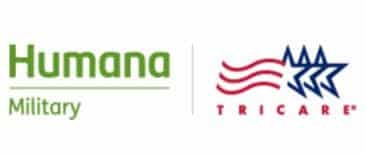This website uses cookies so that we can provide you with the best user experience possible. Cookie information is stored in your browser and performs functions such as recognising you when you return to our website and helping our team to understand which sections of the website you find most interesting and useful.
Stephen W. Pournaras, Jr., MD
Pain From Golfer's Elbow
Fair Oaks Orthopedics, Fairfax VA

- Pain and swelling at the tendons of your forearm muscles that attach to the bony bump on the inside of your elbow
- Severe pain whenyou use your hands to grasp, lift, or twist objects

The pain caused by a golfer’s elbow condition may be acute or chronic, mild or severe. If repetitive movement is causing your this discomfort, it can develop gradually over time. The most common symptoms associated with golfer’s elbow include:
- Tenderness on the inside of the elbow: Patients often experience pain that radiates down the inner forearm.
- Stiffness: Many patients experience stiffness in their elbow joint.
- Numbness: Tingling in the affected area is a common symptom of golfer’s elbow. Numbness typically radiates into the ring and little fingers.
- Weakness: Patients may feel weakness in their hands and wrists.
If Surgery Is Needed..
Surgery is often necessary if you do not respond to conservative methods after 6 months. Open surgery or the arthroscopic technique are generally your options.
Either involve the following steps:
- Local or general anesthesia is given.
- A cut is made over the medial epicondyle.
- Damaged tendon tissue is removed without injuring the surrounding ligaments.
- The healthy tendons are then reattached to the bone and the incision is closed.
If you are experiencing pain from a golfer’s elbow and need treatment, please contact us at Fair Oaks Orthopedics. Dr. Stephen W. Pournaras & our professional medical staff have a great knowledge of the complex network of blood vessels, nerves, muscles, ligaments, tendons, and bones that make up your wrist, elbow and upper arm. W can help you to recover by simply contacting us today.
Frequently Asked Questions About Golfer's Elbow
Golfer’s Elbow is also called Medial Epicondylitis. Medial refers to the inside of your elbow and Epicondyle refers to the bumpy part at the end of a bone on your inner and outer elbow.
Golfer’s Elbow is a term used to describe this condition, when a patient experiences extreme pain inside of their elbow.
This pain feels worse with any movement, usually motions that involve some strength to straighten or bending their wrist.
It is not caused by a golf injury. The name is often misleading. Many patients who have Golfer’s Elbow do not play golf.
Golfer’s Elbow is more of a chronic condition than an injury. Most patients feel pain on the inside of their elbow, especially when they do different motions with their wrist. Most patients notice that their elbow is feeling sore and will not move like it did before. use it like they could before. Pain can start gradually, then becomes more frequent and increases over time.
- Rest. Put your golf game on hold until the pain is gone
- Ice. Apply ice packs to your elbow for 15 to 20 minutes at a time, three to four times a day for several days
- Use a brace or splint
- Stretch and strengthen with suggested exercises
Golfer’s elbow can often be treated by non- surgical methods such as:
- Resting, refrain from movement that puts stress on your elbow
- Appy moist heat where it hurts
- Elbow wraps
- Mild massage to the painful area
- Stretching exercises
Tennis elbow vs. Golfer’s elbow. Different conditions.
Tennis elbow and Golfer’s elbow are opposite because of the location of the pain. Although they are similar conditions, both causing pain along the forearm and elbow. Patients with a tennis elbow have pain on the outside of their elbow while patients with golfer’s elbow have pain on the inside of their elbow.
ORTHOPEDIC CARE IN FAIRFAX, VA
At Fair Oaks Ortho, we believe that cost shouldn’t be an obstacle to highest-quality care available. That’s why we’re proud to accept insurance from most major providers in the state of Virginia. View our list of accepted medical providers, and don’t hesitate to reach out to our staff with any questions.









Mon 8:00 am – 4:30 pm
Tue 8:00 am – 4:30 pm
Wed 8:00 am – 4:30 pm
Thu 8:00 am – 4:30 pm
Fri 8:00 am – 4:30 pm
Sat Closed
Sun Closed
Get In Touch With Us:
For Information Regarding Workers Comp Accidents or Personal Injury, Please send your requests to Cayla Davidson
[email protected]
Phone: 703-591-0077, her extension is 605.
Cayla is Dr. Pournaras’ admin assistant/surgical coordinator.

